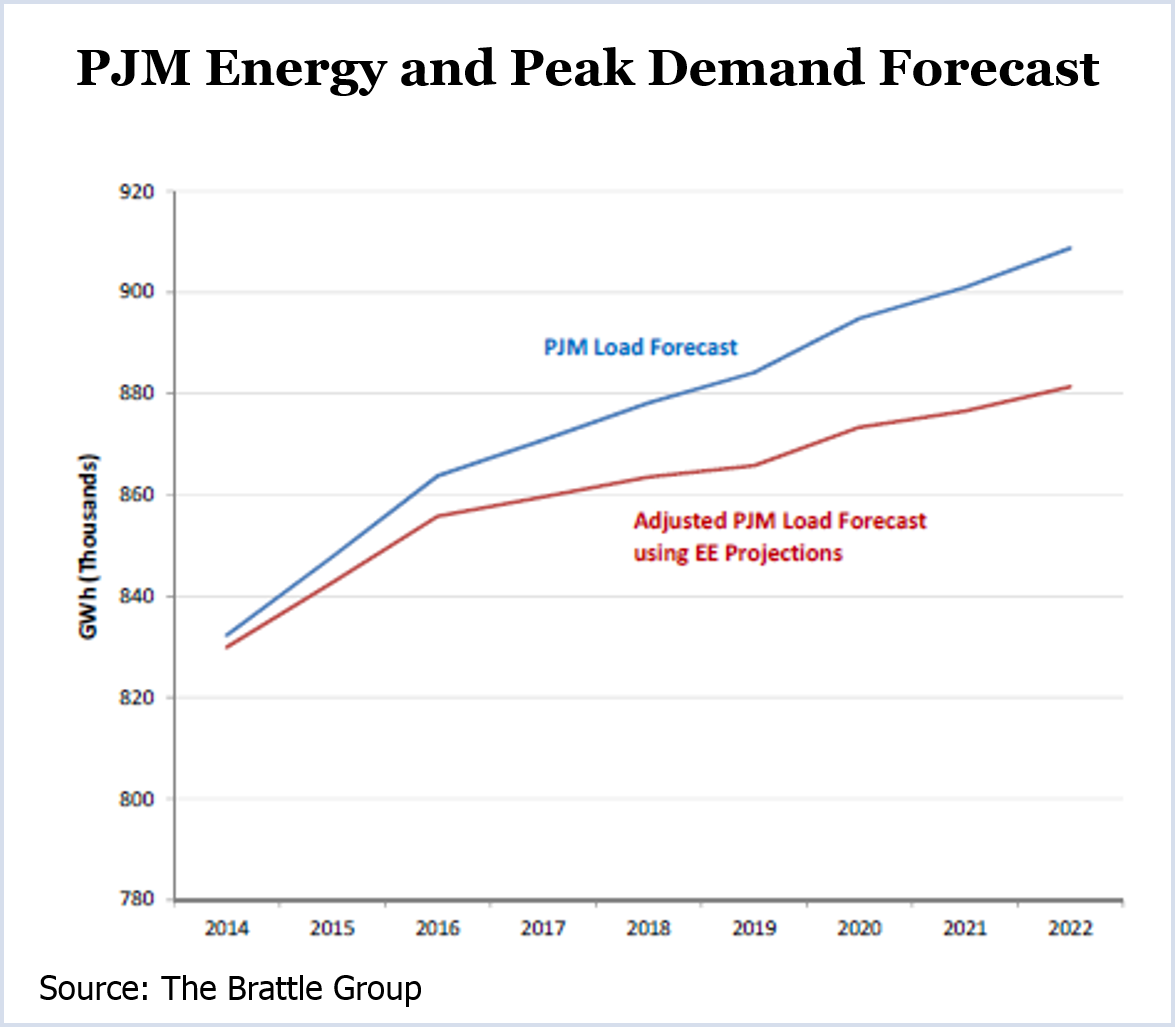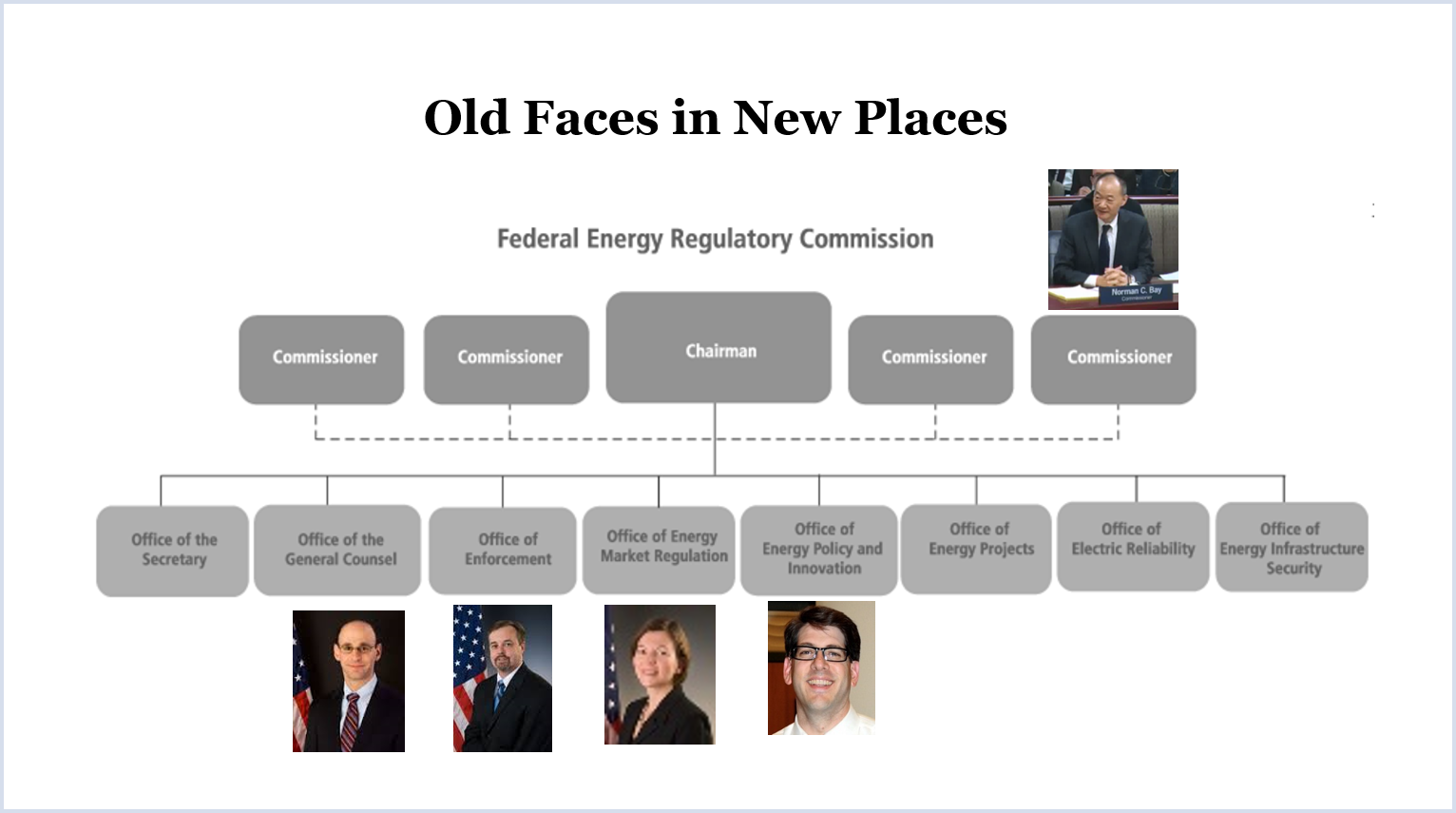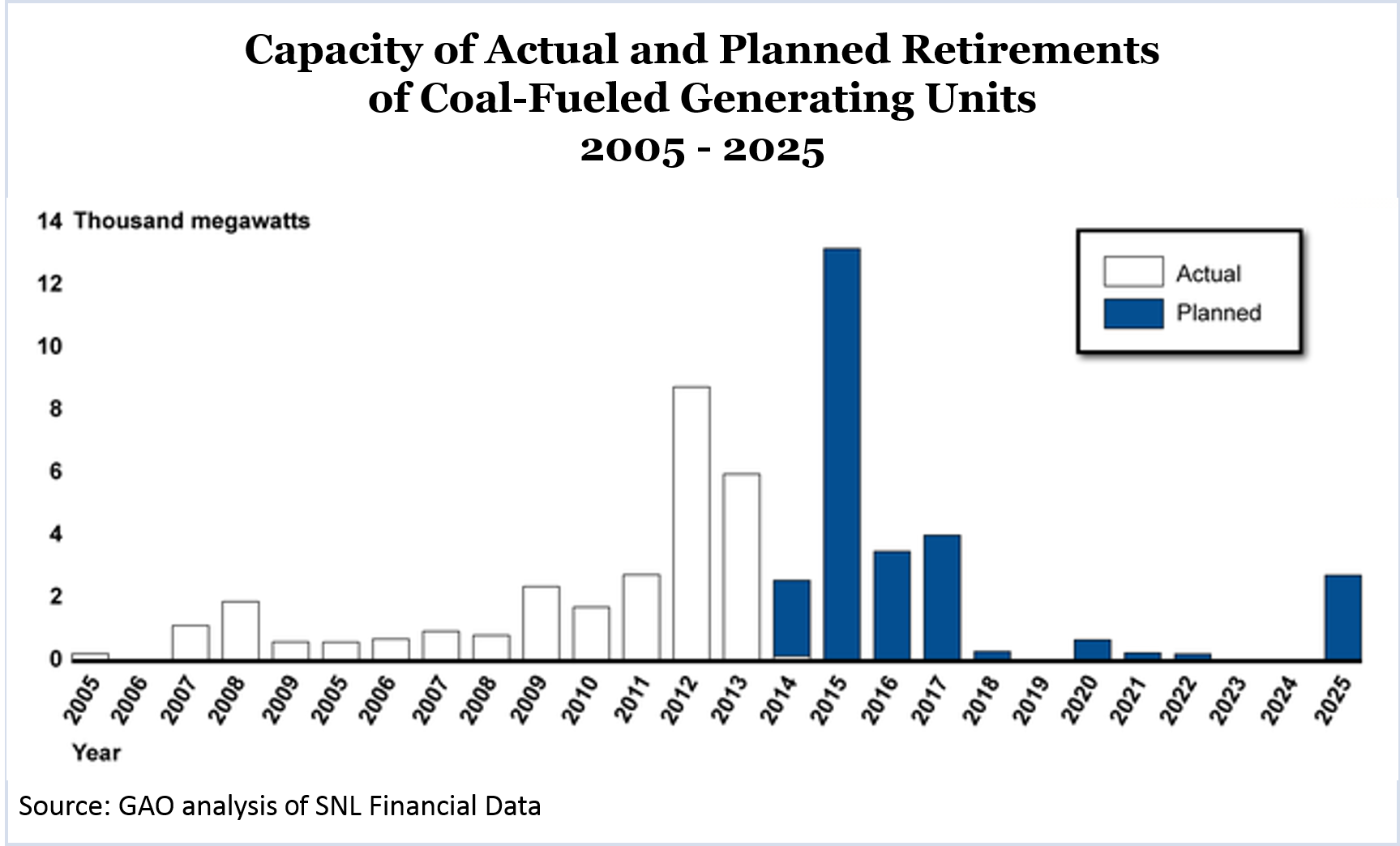By Rich Heidorn Jr.
PJM’s Capacity Performance proposal has done the near impossible: unite the RTO’s stakeholders.
Virtually all of the more than 50 stakeholders who commented on the RTO’s revamp of the capacity market agreed that it goes too far, creates too much risk and is being rushed through the stakeholder process too quickly.
For suppliers, its nonperformance penalties are out of balance with its incentives and threaten to bankrupt individual generators.
For load, it represents an unwarranted increase in capacity costs and increased risk of market power.
Both sides agree that it has been insufficiently vetted and may not improve reliability.
PJM staff won’t publish their final proposal until Oct. 7, after receiving additional feedback from stakeholders in a meeting tomorrow.
But based on an initial review of the comments, it’s unlikely the PJM Board of Managers will seek Federal Energy Regulatory Commission approval for the original plan under the original timeline (see table).
All who commented said they shared PJM’s concern over the high forced outage rate during January’s polar vortex. But only a handful said they largely supported PJM’s plan. (See PJM: New Capacity Product Needed for Reliability.)
Many said PJM should try more targeted, incremental changes, rather than a fundamental overhaul of the capacity market that includes a new product and major changes to both compensation and penalties.
RTO Insider reviewed all 45 comments, totaling more than 300 pages, after their release yesterday. (Several of the filings came from multiple stakeholders.) Below is a representative sampling of the most frequently cited complaints.
STAKEHOLDER PROCESS
Pepco Holdings Inc. decried what it called the “hyper-accelerated time line.”
“We now face the immediate prospect of an abrupt major change in critical PJM market rules that took over four years of discussion in the stakeholder process to develop, plus three months of intensive negotiations at FERC to finalize and which have continued to be tweaked ever since. PJM is now seeking to change these rules after only four or five half-day stakeholder meetings.”
The Public Utilities Commission of Ohio said the proposal includes “significant improvements,” including addressing the need for winter- and summer-peaking products and an acknowledgement that “Out of Management Control” is not a legitimate exemption from performance requirements.
Without changes, however, PUCO said it will have “negative, unintended consequences.”
“By rolling out a new capacity tier before the dust has even settled on recent demand response reforms, and before FERC has even seen filings from PJM’s [variable resource requirement]/Triennial Review, PJM casts a cloud of uncertainty over how these related proceedings, taken in a vacuum, will ultimately affect reliability and capacity prices.”
Maryland Public Service Commission: “Compared to the roughly eight to nine weeks devoted to this matter under PJM’s schedule, both NYISO and ISO-NE conducted a roughly one-year stakeholder proceeding to formulate their recent market performance proposals.”
LS Power Group: “While all markets tend to evolve over time, drastic market redesigns such as the proposal often bring about unintended consequences and can shake market confidence.”
Topaz Power Management, which manages competitive power portfolios owned by affiliates of Riverstone Holdings, said the proposal is “unnecessarily complex and unlikely to resolve the root cause of the January cold-weather events. It introduces additional reliability and market risk that could harm both load and supply.”
Targeted Approach Urged
Several commenters called for a change in the day-ahead market schedule to better align it with gas pipeline operations. Others said PJM should consider an interim winter reliability program such as what FERC approved for ISO-NE.
Delaware Public Service Commission: PJM’s proposal “is an overly broad cannon blast to the entire [Reliability Pricing Model and Base Residual Auction] processes rather than focused rifle shots to specifically address identified generator performance issues.”
Dominion Resources suggested splitting the RPM into summer and winter markets “that are separately cleared using the current RPM construct.”
Old Dominion Electric Cooperative and Southern Maryland Electric Cooperative urged PJM “to return to energy and ancillary market solutions rather than add additional requirements to an already cumbersome administrative construct.”
LS Power: “PJM should avoid shoe-horning an entirely new capacity product designed to address winter reliability issues within a structure predicated on meeting PJM’s peak capacity needs in the summer. Instead, the winter reliability issues can be best addressed through combining a few targeted enhancements to the current capacity construct included in the proposal along with establishing a new targeted winter reliability program. This approach would redress certain market flaws that have been identified, and at the same time creating [sic] incentives for generators to qualify for a separate winter-focused product.”
Brookfield Energy Marketing: “In our view, for the most part, the PJM capacity markets are currently functioning relatively well. As a result, the current PJM capacity construct does not need to be totally re-constructed as contemplated in the proposal, but instead can be altered with appropriate rule changes that provide the needed performance incentives that PJM is purportedly seeking to address.”
GENERATORS
Suppliers said the proposed penalties could bankrupt individual generators after a single peak-day outage and could lead to accelerated retirement of steam units.
Penalties Unduly Harsh
Generators were unanimous in calling for a reduction in the proposed penalties and in their opposition to the elimination of current force majeure provisions.
Public Service Enterprise Group: “The proposal leans too heavily on the ‘stick’ and fails to provide an adequate ‘carrot.’”
American Electric Power, Dayton Power and Light, FirstEnergy, East Kentucky Power Cooperative and Duke Energy Ohio: “The size and likelihood of increased penalties under the current proposal, matched with continued uncertainty in the capacity price, could easily result in a net revenue decrease for steam generation units, which could further spur premature retirements.”
NRG Energy: “The exclusion of force majeure is inappropriate and could lead one to believe PJM wants every generator to make investments to be hardened for hurricanes and all conceivable natural disasters. This cannot be accurate. Likewise, if a generator has firm natural gas service, and that service is disrupted by an outage on the interstate pipeline system, that is a classic force majeure and the generator should not be penalized for events that are truly outside of its control.
“The proposed penalty is so high (up to 2.5 times a resource’s total annual capacity payments) that it could bankrupt an otherwise viable resource after only one unpredictable outage that should be considered out of the control of the generator. A more appropriate penalty design would place no more than 100% of a Delivery Year’s capacity credits at risk (as opposed to the 250% in the proposal) for any single unit.”
Competitive Power Ventures, which is building combined-cycle plants in Maryland and New Jersey, said the proposed penalties for nonperformance by a 600-MW Capacity Performance generator could total $110 million.
“Assuming a $100/MW-day clearing price, the financial risk imposed on a 600-MW Capacity Performance resource is $55 million, of which about $22 million reflects a full forfeiture of RPM revenues for the year. If the clearing price were $200/MW-day, which occurs frequently in constrained [locational deliverability areas], this would result in a financial exposure of $110 million for this same project. … This penalty structure is unnecessarily punitive and could jeopardize the financial viability of a generation resource.”
Dynegy and Invenergy faulted PJM’s “unrealistic expectations” of generator performance and provided a list of what they called the RTO’s for “faulty assumptions.” Among those assumptions: that all risk should flow to the generator; that dual-fuel capability or fuel on the ground is a panacea; that all gas-fired generators have equal access to fuel-firming products; and that gas-fired generators should maintain the same flexibility during “critical days” on the pipeline as regular days.
EquiPower Resource Corp., which owns 3,600 MW of PJM generation, also criticized the RTO for what it said was a lack of understanding of gas-electric issues. “It appears that some parties have told PJM that no-notice service is readily available as long as generators are willing to pay for it. This is a fallacy. If some no-notice service exists at a few locations inside PJM, we doubt that it is adequate to fuel more than a few generators, never mind the entire PJM gas-only fleet.”
PSEG: “The commercial viability of many resources with higher than average EFORd [equivalent demand forced outage rate] levels will be greatly challenged by this structure. Further, imposing a construct that forces serviceable facilities out of the market because they do not meet highly idealized standards of performance and flexibility is inefficient and will impose unnecessary costs on consumers. Indeed, because many of the most affected units will be older coal and oil units, an unintended consequence of the CP proposal could be to actually decrease reliability by undermining fuel diversity.”
Shell Energy North America said “it may make more sense to offer capacity that we control into the capacity auctions as a Base Capacity Product, rather than as CP, as we are concerned that the current proposal does not provide a reasonable opportunity to earn a return on investments we may make in such resources, nor does it compensate us for the risks we will face with the CP as proposed.”
PJM Power Providers Group (P3): “P3 is struggling to see how the enormous additional risks that will be forced upon generators will be appropriately compensated, year after year, with corresponding revenues.”
Capacity Performance Requirements Too Restrictive
Several commenters complained about the 6,000 run-hour threshold requirement.
NRG called the new product “poorly defined and hastily proposed.”
“The current proposal is discriminatory and likely to have unintended and adverse consequences by excluding substantial quantities of reliable, fuel-diverse resources from the premium capacity product. Many baseload resources with substantial on-site fuel storage will not qualify as Capacity Performance resources because they do not satisfy the required 6,000 run-hour qualification or the greater than 18-hour minimum run time requirement for the Base Load Asset Class. A facility’s run time is based purely on energy market economics and has nothing to do with investment surrounding fuel certainty.”
LOAD
Overly Conservative
Consumer advocates from Delaware, Maryland, New Jersey, Illinois, West Virginia, Pennsylvania, Indiana and D.C.: PJM’s proposal “goes far beyond what is necessary, … is likely to be unacceptably costly and poses a grave potential for resource owners to exercise market power. … PJM proposes to identify the quantity of the new CP product that it will procure through a new reliability study that will focus on winter peak needs. However, the new methodology apparently suggests PJM will require 85 to 90% of all capacity to be CP. We are concerned that the proposed study will rely upon extremely conservative and unrealistic assumptions.”
NextEra Energy Resources: “If PJM were to procure the 85% CP resource level for the 2015/16 delivery year at a clearing price near $190/MW-day, [load-serving entities] would bear roughly $10 billion in additional capacity payments relative to the projection from the most recent incremental auction.”
American Municipal Power (AMP) said PJM has chosen a “radical solution.”
“There has been no clear demonstration by PJM that its proposal has investigated the impact on customers or even whether it will provide superior reliability, particularly during the winter months about which PJM has claimed it is most concerned. While there is no denying or diminishing the magnitude of the ferocity of last winter and the polar vortexes, PJM must remember that it has determined that the winter event was a one-in-10-year event. If the system wasn’t close to the edge during the extreme winter events, it would have meant that the system was over-engineered and inefficient.”
New Jersey Board of Public Utilities staff: The proposal is “a complex and, in certain critical areas, undeveloped set of unnecessary market changes designed to solve near-term reliability concerns that could be addressed far more simply and effectively. The proposal would, moreover, impose significant, but not as yet precisely quantified, capacity-cost increases on end-use customers. The reliability issues that faced PJM this past January were principally occasioned by generator performance failures and were not the direct consequence of market design failure.”
PJM Industrial Customer Coalition: “PJMICC and its members have fundamental questions whether the PJM Problem Statement on PJM Capacity Performance Definition (‘PJM Problem Statement’) accurately captures the reliability concerns. Even assuming that it does, however, PJMICC has serious concerns that the CP Proposal is not a proportionate response and, in fact, may not effectively target the gas‐electric coordination issues that appear to be the root of the reliability problem. If that is in fact the case, the CP initiative may have devastating impacts on energy‐intensive businesses in the PJM footprint.”
Market Power
AMP: “Based on the limited information provided thus far, it appears that PJM’s proposed measures to retain the mandatory capacity markets while breaking out the capacity product into separate categories will substantially increase market complexity and pose the potential for gaming at best.”
NJ BPU: The proposal “appears to open up a distinct new opportunity for strategic withholding. The bifurcation of existing annual capacity resources into Capacity Performance and Base Capacity categories would, absent an explicit set of additional provisions that stakeholders have yet to see, invite generation fleet entities to withhold Capacity Performance capacity and bid such capacity in as Base Capacity in an effort to drive up the Capacity Performance clearing price. There is nothing evident in the Proposal that would prevent such strategic behavior.”
MARKET MONITOR
The Independent Market Monitor called the proposal “an ambitious and timely effort to address some of the significant issues with the current RPM capacity construct” and said it “appropriately focuses substantially on performance issues.”
But the Monitor said the creation of multiple classes of capacity is unwise. “The capacity market should include a single capacity product with one set of performance incentives. There is no reason to have multiple products. With well-designed performance incentives, all sources of capacity can determine how to offer the single capacity product consistent with the physical limits of the resource and the reliability needs of the PJM system. Creating multiple products is the first step towards micromanaging the mix of capacity resources and attempting to substitute the judgment of the planner for market choices.”
The Monitor said its sensitivity scenarios found that coupling offers for resources that cannot currently meet Capacity Performance requirements decreases the price separation between Base Capacity and Capacity Performance prices.
Reducing the maximum amount of Base Capacity resources increases the Capacity Performance price and the price separation between Base Capacity and Capacity Performance products. A requirement for firm gas transportation would have a larger impact on clearing prices than a requirement for dual-fuel capability.
The Monitor reiterated its call for eliminating the 2.5% demand adjustment as well as the Limited and Extended Summer demand response products.
“The capacity market should no longer include any demand side resources on the supply side of the market, including energy efficiency resources (EE). Demand side resources should be on the demand side of the market where they can and should be a very significant component of the capacity market. … Load that does not want to pay for capacity, and is willing to interrupt its use of capacity when that capacity is needed by those who do pay for it, should be able to avoid paying for capacity. That is the demand side of the market as it should work and can work.”
The IMM said its recommendations share PJM’s goals but seeks to accomplish them differently:
- “The IMM proposal includes a mechanism to ensure that market prices reflect the net revenue shortfall or missing money, which is to set the offer cap at net [cost of new entry]. The PJM proposal does not include such a mechanism.”
- “The IMM proposal includes performance incentives which are solely a function of the provision of energy and reserves during high load hours and which apply equally to all capacity resources. … The PJM proposal imposes high and difficult-to-predict risks on generators as a result of including both quantity and price (LMP) risk in the performance incentives.”
- “The IMM proposal does not provide for exceptions to the performance incentives. … PJM’s proposal includes exemptions for units that are not committed by PJM or dispatched down by PJM for providing ancillary services or because of transmission constraints.”
- “The IMM proposal includes a must-offer requirement for all capacity resources, which includes the ability of unit owners to incorporate the costs of being a capacity resource in such offers. The PJM proposal does not appear to include an explicit must-offer requirement.”
RETAIL MARKETERS
Consolidated Edison Energy and Consolidated Edison Solutions said PJM’s proposed implementation schedule is unfair to LSEs.
“All market participants have come to rely on the cost and regulatory certainty of the three-year forward mechanism. This allows retail suppliers like CES to account for future capacity costs in their retail contracts with customers, and modifying this capacity market construct without the typical three-year forward lead time would result in unpredictable and potentially unrecoverable costs for retail LSEs.”
DR, STORAGE, RENEWABLES
Brookfield: “Historically, hydro resources have been considered a reliable capacity resource, and PJM can depend on that type of performance going forward. In general, these resources do not depend on a third party to sell a fuel commodity and ensure transportation to the site. … Hydro should be given the option to offer into RPM as a ‘Capacity Performance’ product if the resource is prepared to take on the risk of hourly non-performance penalties.”
NextEra: The proposal “effectively precludes participation by wind resources and non-pumped storage resources.”
The Mid-Atlantic Renewable Energy Coalition said the proposal “would in effect value the capacity benefits of wind at zero.”
Consumer advocates said the proposal “will have a substantially negative impact on the ability for demand response to meaningfully participate in PJM’s capacity market despite the fact that DR compensated for faulty generators during January 2014.”
The Energy Storage Association said PJM’s proposal that Capacity Performance resources be required to provide their full installed capacity (ICAP) for 16 hours per day for three consecutive days is an “unnecessary barrier to storage participation in RPM.”
“Over the course of three days, a Capacity Performance resource must be able to discharge for 48 hours with only 16 hours for recharging. This limited time for recharging means that most facilities will not be able to fully recharge each day, further reducing capacity value. For example, the 30,931-MWh, 3,003-MW Bath County Pumped Storage Station would only have a capacity value of 1,391 MW under proposed Capacity Performance rules. The ESA believes that this dramatically undervalues the contribution modern energy storage can make to system reliability.”
ENERGY EFFICIENCY
EMC2 said PJM has “large amounts of winter energy efficiency that has up to now been invisible to RPM. With the new emphasis on winter reliability, we suggest that RPM would be improved by recognizing the value of these resources.”
“Valuing EE measures at the minimum of their summer and winter reductions undervalues these resources. Instead, we propose that EE measures that have a higher summer value than winter value be credited for their winter value as Base or Capacity Performance, with any excess summer reductions credited as Summer Extended.”







